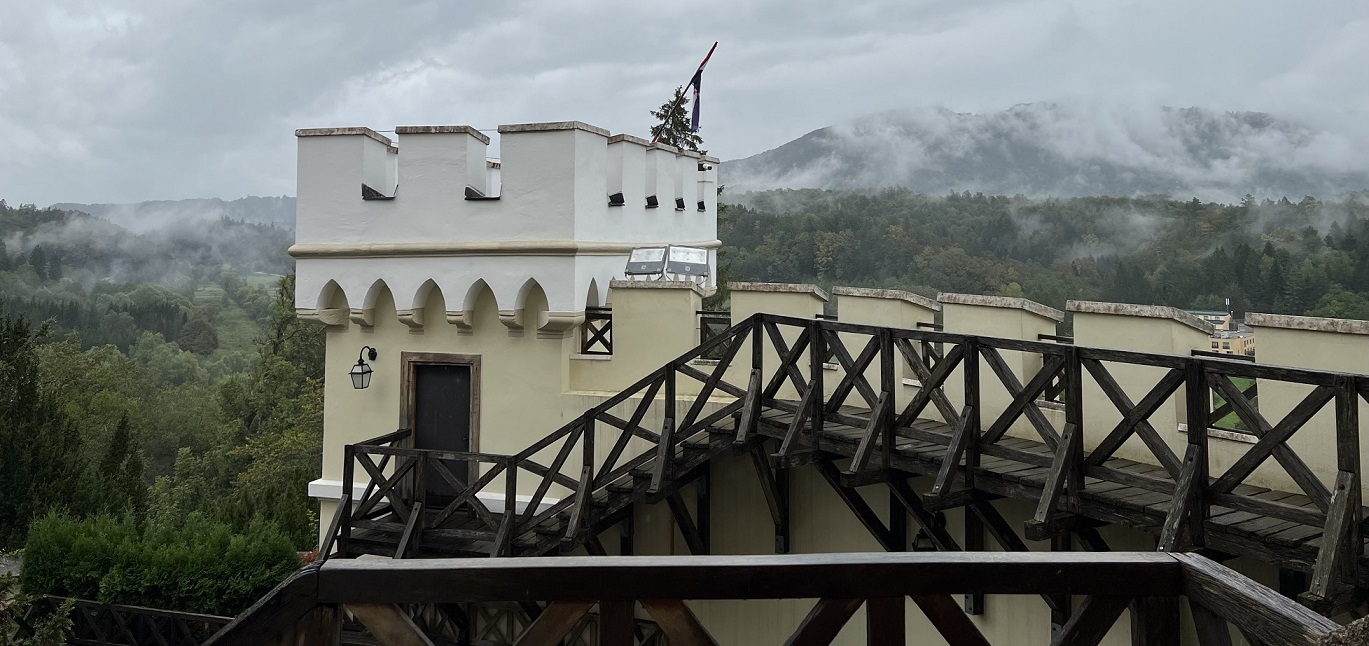
Table of Contents
Zagreb is a fascinating city with cavernous department stores as you’ve never seen before, world-class street murals, and a curious blend of medieval and Yugoslavian Socialist Realist architecture.
Trakošćan Castle and the Baroque town of Varaždin are located within an hour’s driving distance north of the city. A day’s outing to see them will add an even deeper dimension to your Zagreb visit.
Date of Visit: September 17 and 18, 2022—Zagreb, Trakošćan, and Varaždin, Croatia
With its socialist-era architecture and big city vibe, Zagreb was not on our bucket list, but it was where our tour began.
It’s a city most Americans don’t know exists.

Two nights in the capital would allow us to see a slice of Croatia that would have been hidden from us if we’d gone straight to Split or Dubrovnik. On our one free day, we’d squeeze in a day trip to Trakošćan Castle and Varaždin, a Baroque city in the northern Croatian countryside, before returning to see the historic section of Zagreb.
From there, Experience Dalmatia’s driving itinerary had us heading across the international border to Slovenia. We would see Ljubljana, Lake Bled, and the Lipica Stud Farm with its 300 prized Lipizzan horses before traveling down the length of Croatia to see Istria, Plitvice Lakes, and Split and Dubrovnik on the Dalmatian Coast.
September Countdown
As our mid-September departure date drew closer, I kept an eye on the weather forecast for Croatia and Slovenia. My iPhone app showed sunshine icons the week before our trip. Amazingly, the hottest day was a sweltering 104 degrees Fahrenheit, a good 30 degrees hotter than northern California.
I could handle that. I grew up next to the humid Persian Gulf. Shorts, capri pants, sleeveless tops, and “strappy” sandals went into my suitcase or “Passage to India” steamer trunk, as Chris is fond of calling it in deference to its large size.
The Best Time to Go
The locals say the best time to go to the Balkan Peninsula is during the shoulder seasons from May through June and mid-September to mid-October.
At those times, there are fewer tourists, and it’s less of a “sausage fest” in Split, Hvar, and Dubrovnik. By September, the British stag parties have transitioned to marital bliss (hopefully), and the heat-seeking bikini-clad sun-worshippers have packed up and left the premises.
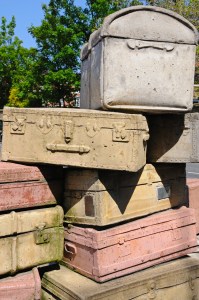
The forecast dramatically changed just days before our departure from California to Zagreb.
Instead of sun icons, there was a row of ominous rain clouds. Temperatures were predicted to range from 37-68 degrees Fahrenheit for the first ten days of our vacation. So out went the summer clothes. Now sweaters, waterproof jackets, and mini-umbrellas went into the steamer trunk. I imagined us enjoying a ride on our rented Segways through a Zagreb downpour.
Even a fertile imagination has limits. I shook my head.
“Maybe the weather app is wrong.”
But it wasn’t.
Rain greeted us when our Croatia Airlines flight touched down in Zagreb after a change of planes in Amsterdam.
Customs and Work Permits
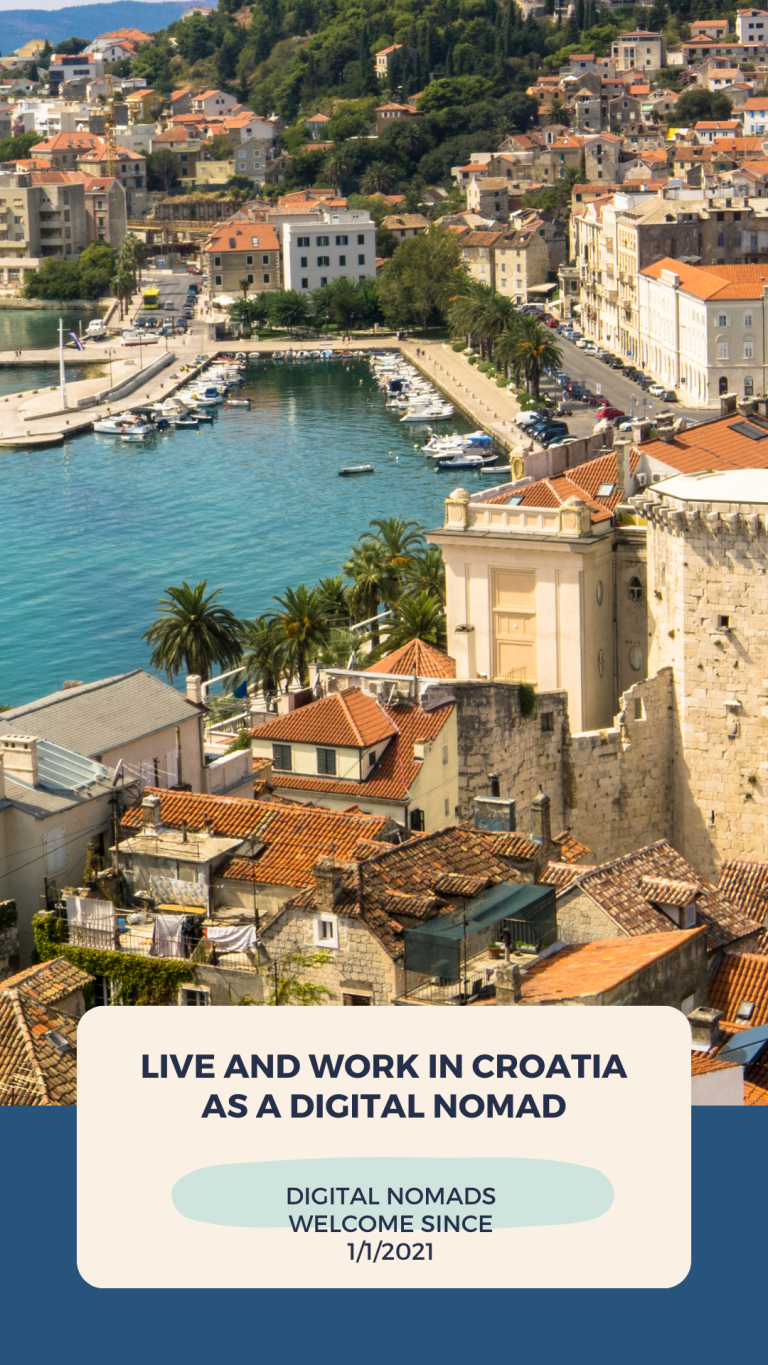
There was one immigration “policija” officer checking passports for our growing line of non-EU passport holders. After the first hour, only two people had cleared customs.
We watched EU nationals breeze through an empty roped-off area. Two customs officers barely glanced at their passports.
“It’s all these people coming in with work visas that are holding up our line,” grumbled the English woman in front of us.
She hadn’t said a word until now, but she was working herself into a tizzy. “This is my 12th time coming here, and this is the worst I’ve seen it,” she said.
Croatia’s cyclical economy expands with seasonal jobs during the tourist season. Jobs in sales, restaurants, cleaning, nursing and caregiving, trucking, education, and security are in high demand.
There is no shortage of people who want to work in Croatia. Its beauty rivals Italy, and the cost of living is reasonable compared to other European Community countries.
And yet, Croatia has also seen an exodus of workers to Germany, Austria, and other European Community countries since Croatia joined the EC in 2013.
Digital Nomads
Now, thanks to a new digital nomad work permit that took effect on January 1, 2021, knowledge workers worldwide can stay up to a year and work remotely from Croatia.
If some of these much-needed workers were in front of us trying to verify their paperwork to the Croatian bureaucracy, it was of no consequence to the English woman. Instead, she turned and shrieked across the room at a young Asian man in front of our long, snaking line. “Go, it’s your turn. Go. Go. He is ready for you at the window.”
Suddenly, it was as if the Red Sea had parted. The EU immigration lines opened up to the rest of us. The great unwashed masses (who were us after many hours of travel) surged toward the other side of the room to freedom.
Where Are Our Bags?
Chris and I rushed to the luggage carousel to grab our two checked suitcases. The baggage handlers had had more than an hour to unload them, yet our bags were nowhere to be seen.
The carousel had stopped, and an airport worker pulled the few remaining luggage pieces from our flight. Then, he motioned me to go to a window where a few other travelers were queued.
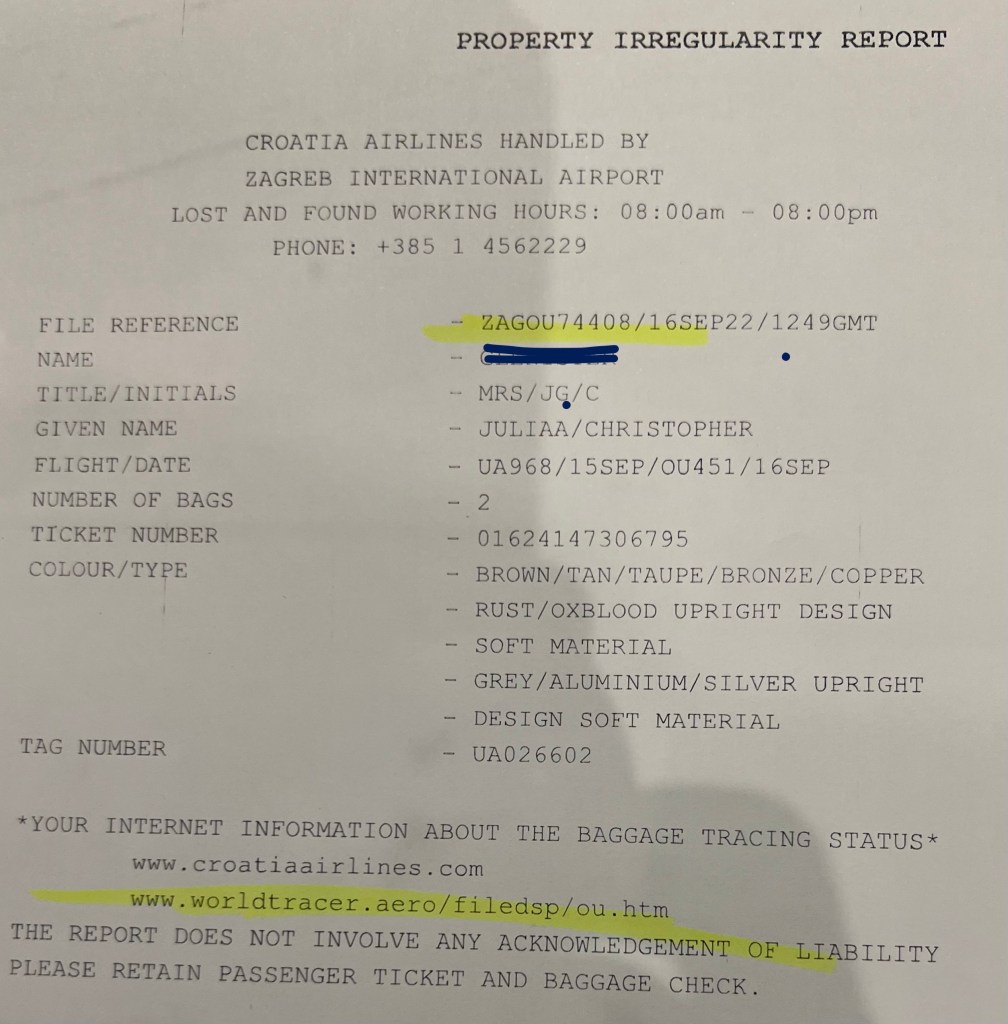
Property Irregularity Report
Chris wasn’t ready to give up on our luggage and was off looking at other carousels. I filled out a “Property Irregularity Report” (otherwise known as a lost luggage form) and chastised myself for not packing a change of clothes and toothbrush in my hand luggage.
Mario, the owner of the driving tour company we had hired, warned us there was a 50 percent chance our luggage would be lost. I should have heeded his warning and bought the most oversized carry-on bags.
Ever the optimist, I was sure our luggage would be delivered to our hotel in Zagreb that night or the following day.
At the time, Chris and I had no idea about the piles of lost luggage accumulating in airports worldwide. Since the pandemic cutbacks, airlines have been plagued by a shortage of baggage handlers, pilots, and flight attendants. Airport worker strikes have exacerbated these labor shortages. Lost luggage has been one of the casualties of this unfortunate situation.
A Shopping Spree
We dropped our bags in our comfortable hotel room and set out to buy necessities inside our lost luggage. As luck would have it, Hotel Dubrovnik is conveniently located next to Jelačic Square in the Lower Town (Donji Grad) and close to clothing stores and pharmacies along Illica Street. Undeterred by the rain this Friday afternoon, many local shoppers crowded the sidewalks.
We darted in and out of hip shops before coming to Nama, an old Vienna-style department store nostalgic for Zagrebians. There I found a pair of square-toe ankle boots with red cross stitching. They looked Croatian and would be a souvenir, though I had no clue what Croatian fashion looked like. I would later learn they were made in Switzerland. The next challenge was to find pants that would go with my funky, new ankle boots.
Land of the Amazons
After trying on countless jeans in Zara, a fast fashion clothing store, I came to the startling revelation that I was now in the land of Amazon warrior women. I’m above average height in the U.S., but here in Zagreb, judging from all the pants in their stores, the women had legs a good three inches longer than mine.
Exhausted by the hunt, I finally purchased a pair of khaki-colored pants. The only thing I could do was roll them up.
The pharmacies were closing, and we needed to buy toiletries.
By the time we returned to our hotel, it was dark.
The front desk manager assured us that our luggage had not arrived, and he was very sorry that the hotel did not have any safety pins for me to hitch up my new “Amazon Warrior” pants.
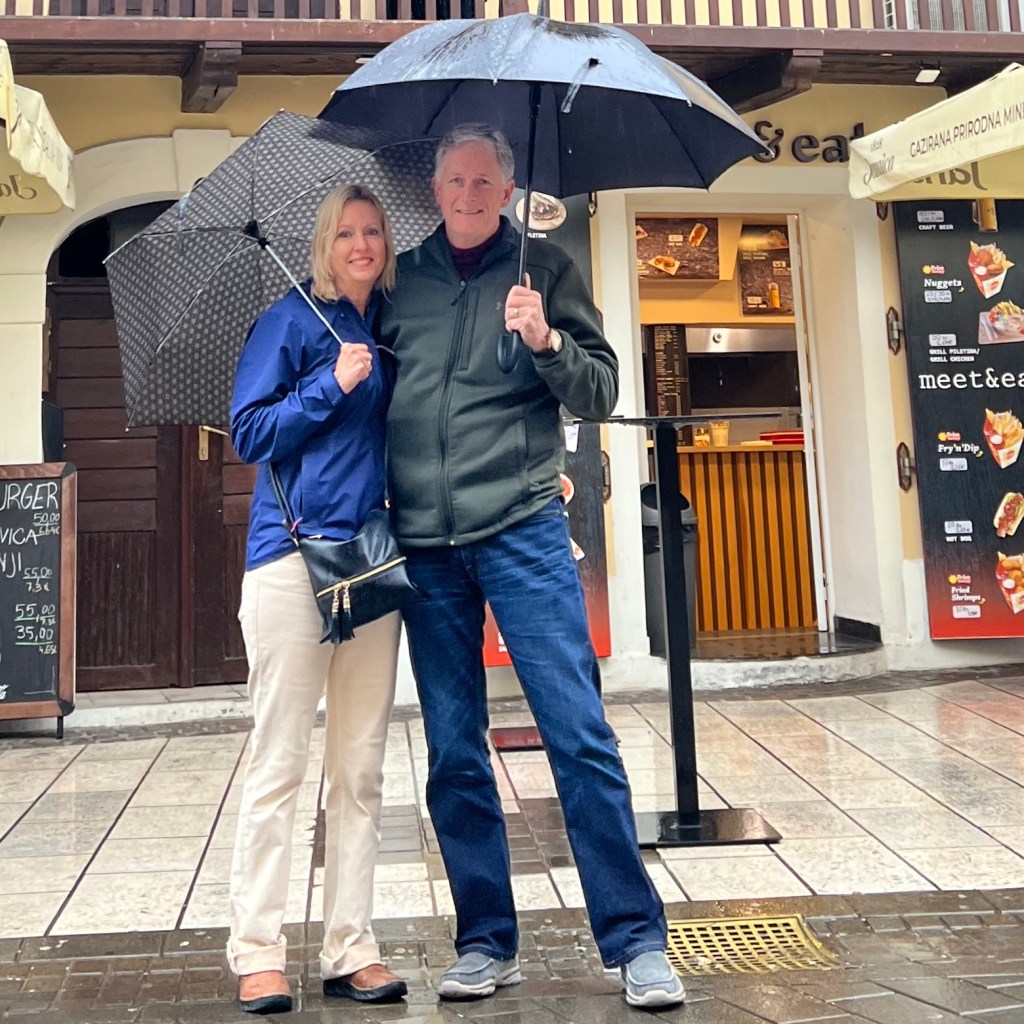
Drive to Trakosćan Castle
The following day we met our driver, Frane, who picked us up in a shiny black Mercedes van for a visit to Trakošćan Castle and the Baroque town of Varaždin. Both are located about an hour north of Zagreb. They are separated by 24 miles of winding roads and dense forests.
A light rain fell as we drove along in the comfort of the van. It was large enough to seat five passengers comfortably. The driving company must have heard about my steamer trunk and wanted to ensure they had enough room for our luggage during our 14-day trip.
Tell Us About Croatia
Along the way, we peppered Frane with questions. Were the streets safe at night? Were there many jobs?
We learned that the crime rate in Croatia is low and that many Croats have left the country to seek higher-paying jobs within the European Community. Germany and Ireland are two of the most popular destinations.
Frane noted that Ireland’s lifestyle is similar to Croatia’s. It occurred to me that both Ireland and Croatia have another similarity. They have both had to make peace in recent years with different religious identities.
Street Art
As we wound through the city, we noticed graffiti tags scrawled on building after building. The tags range from political statements to people’s names, sports teams, and even philosophical expressions.
Colorful murals are a more elaborate form of street art that can be seen around Zagreb. Large murals are painted on abandoned and rundown buildings, occasionally on the walls of drab, Socialist Realist architecture that is abundant in this city, and Art Park that street artists reinvigorated.
Here’s a map of Zagreb’s street art, so you don’t miss these works of art as we did.
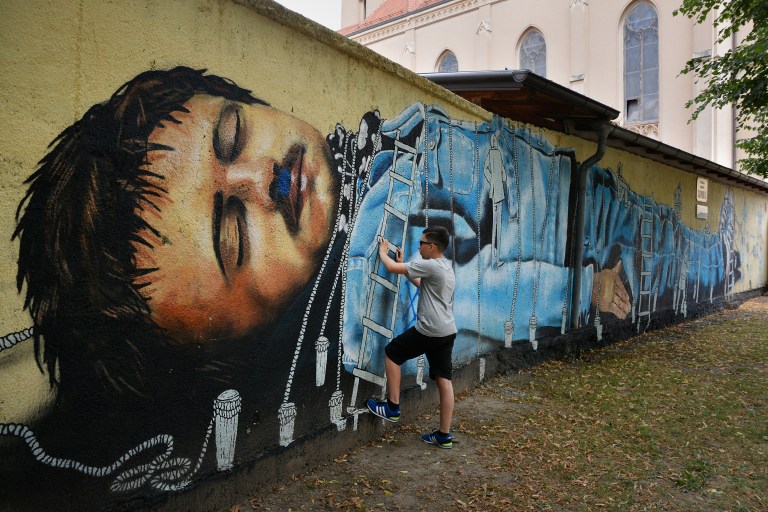
The Draškovićs of Trakošćan
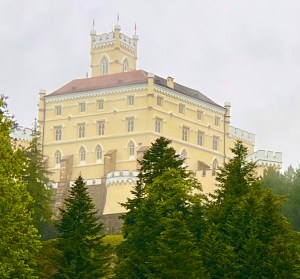
The splendor and pale yellow facade of the fairytale Trakošćan castle suddenly appeared on a hilltop in high relief against the gray sky. We were transported into another era and another place. If I hadn’t known better, I’d have sworn we were in Austria.
The oldest part of the castle was built in the 13th Century as a fortress, but little of that remains.
Trakošćan passed from one noble family to another throughout the Middle Ages, but it was many centuries later that it began to look as it does today.
In 1569 Croatian-Hungarian King Maximilian II of Habsburg granted Trakošćan to Gašpar Drašković and his son Ivan II as a reward for their service in defending the Croatian frontier during the fiercest of the Austro-Turkish wars. It must have been a doozy of a battle considering the reputation of the Ottomans.
Castle Gets A Make-Over
By the time the castle had passed down to a few generations of Draškovićs, it had slid into disrepair. So one of the Drašković heirs sold off another property to remodel Trakošćan in the fashionable Neo-Gothic style that was all the rage in the 19th Century.
No one knows, but it’s a good bet that Laxenburg Castle near Vienna was its inspiration. The first phase of renovations began in the 1840s. Formal gardens inspired by the Romantic movement were designed and laid next to an indigenous oak and hornbeam forest.
The second phase of reconstruction added a terrace to connect the southern and western towers. That phase is believed to have occurred about 20 years later, between 1862 and 1869.
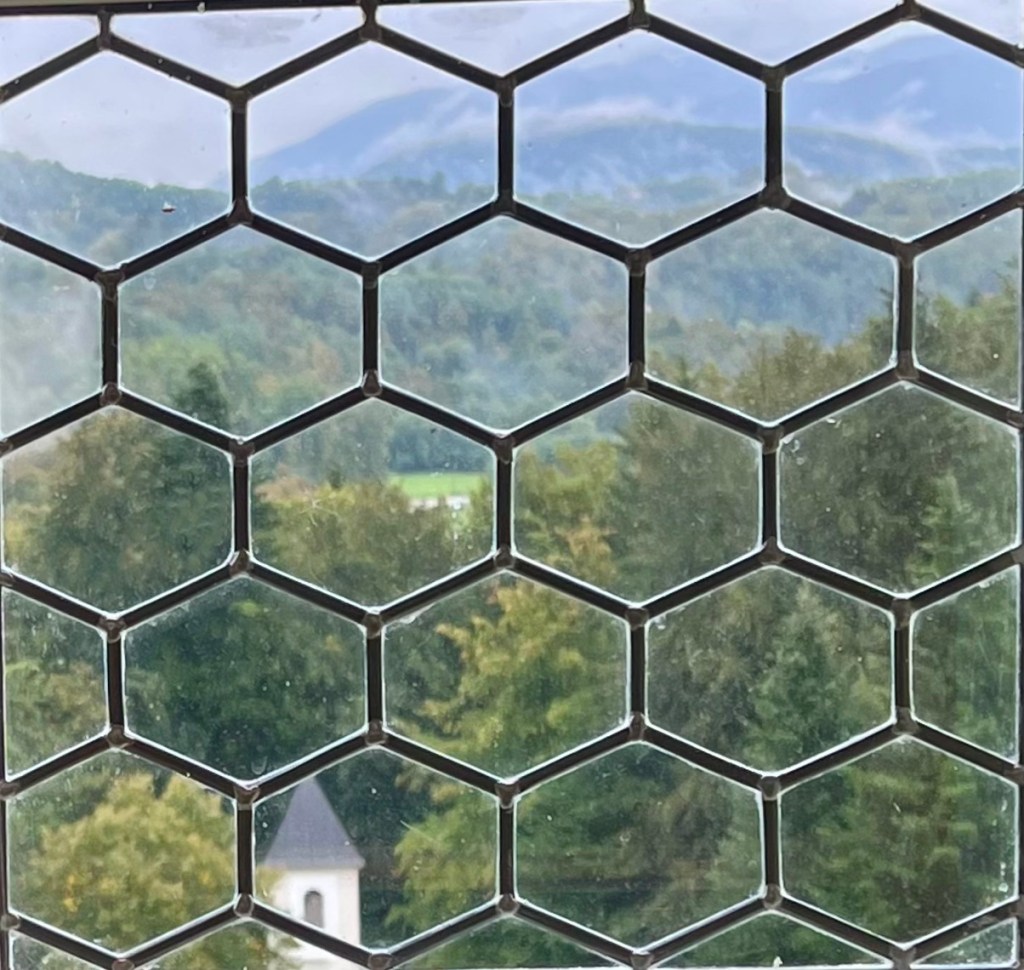
Trakošćan became a stately residence that the Drašković family held on to until the end of WWII.
In 1945 they fled to Austria, and Trakošćan became a government holding in the 1950s.
It has been a state-run museum ever since.
One of the first rooms we entered was a vaulted Gothic-style room. It had been redecorated in the 1800s to reflect the castle’s medieval past.
I wouldn’t call it cozy with barbarian firearms hanging on the walls: battle axes, pikes, tridents, and two full-body sets of anatomically-shaped armor.
A Family Resemblance
As we walked through the rooms, Chris saw a portrait of Petar Drašković.
“Oh my, god, Julia. It’s the spitting image of my brother Peter.”
He was right. If you removed the truncated handlebar mustache, this smiling, rather pleasant-looking fellow could have been a relative.
I began to look at the castle in a different light. If Petar was an ancestor, perhaps we had a claim to this castle.
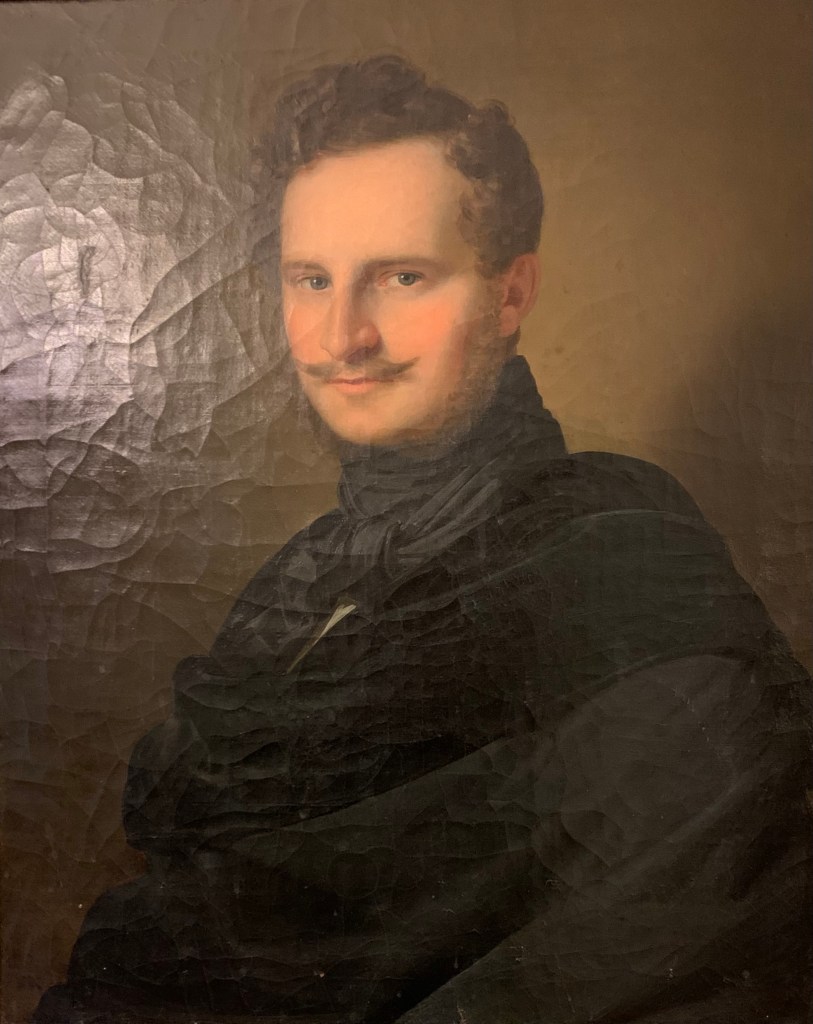
Never mind that Chris’ ancestors all hailed from England and, to our knowledge, had never set foot on the continent. A claim is a claim.
About this time, I considered the large ornate furnaces that stood like sentries in several rooms.
It must get cold in the winter. I shivered. And after some reflection, I decided to relinquish our claim.
Next Stop Varaždin
We had an hour to walk around Varaždin, a city that time had forgotten.
The muted pastel buildings pitched red rooftops, and ornate windows topped with curved pediments playfully defied the dreary day. Interestingly no two buildings were the same, but they fit together perfectly to give the old part of the city its quintessential European charm.
We decided steaming cafés au lait seemed a good idea so that we could sit outside on the main pedestrian square under a canopy. Only one or two brave souls darted into shops or walked hurriedly under colorful umbrellas. It was not a day for people-watching.
It was not a day for sightseeing.
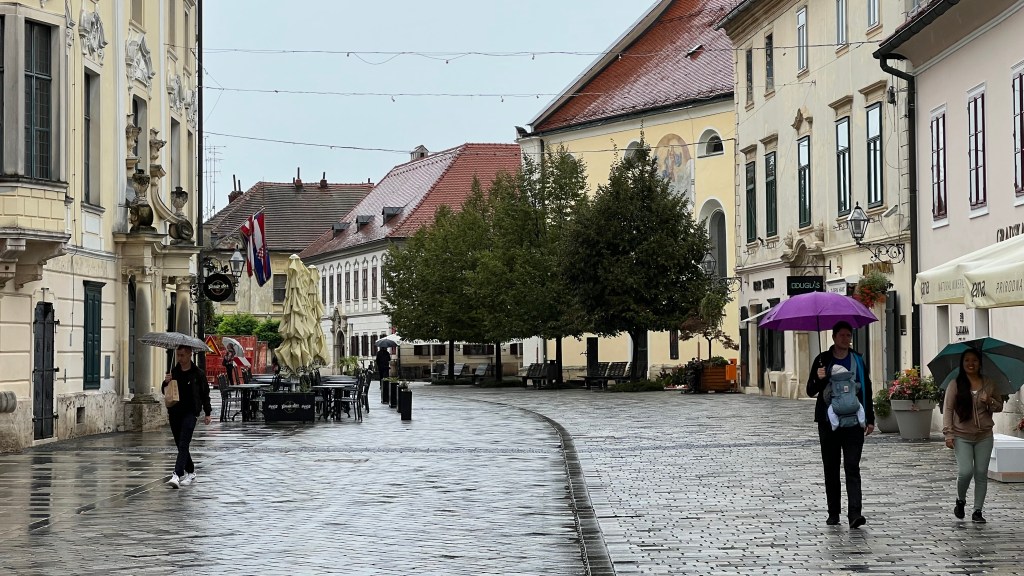
If you search for Varaždin online, you will find some interesting facts. In 1756 it became the capital of Croatia due to Francis Nadasdy’s decision to take up residence in Varaždin. He was an Austrian field marshal with the noble “Ban” title.”
Twenty years later, a devastating fire destroyed 80 percent of the city, and Zagreb became the capital again.
Varaždin was rebuilt during the Baroque period and today is often referred to as ‘Little Vienna.’
What We Missed
If we had had more time and better weather, we would have explored this charming city, and I would have had more to say about it.
While we did wander a few of the cobbled streets, we completely missed the castle with moats and a drawbridge that is now the city museum.
We also missed the Museum of Entomology, with 4,000 insects on display. Did you say ick?
What I Wish I Had Missed
In hindsight, one place I wish we had skipped but didn’t was a cosmetic shop. It was next to the cafe, and I needed to replace a few items in my lost luggage.
The clerk behind the counter spoke no English, and I spoke no Croatian, but somehow we managed to communicate with hand gesturing and facial expressions.
She gave me six or seven sample sachets of a European brand of face creams that I applied liberally that night. Four days later, I was practically clawing at my itchy face, which had puffed up like a balloon when we arrived in Istria.
Zagreb's Old Town Charm
We returned to Zagreb to meet our city guide, Nive, for a two-hour walking tour. Mario, at Experience Dalmatia, booked the tour for us the day before, and Nive was waiting in the pouring rain near our hotel.
Nive gave us a quick introduction to Zagreb’s recent and ancient past as we huddled under cover of the arch of a saffron-yellow beaux-arts-style building in Ban Jelačić Square.
The rain made the air feel colder than 50 degrees Fahrenheit, but I soon forgot how cold I was.
Nive transported us into another era.
Josip Jelačić Statue
We stood near the imposing equestrian statue of Ban Josip Jelačić in the center of the square. Although he is a Croatian national hero who abolished serfdom and sided with the Habsburgs against the Hungarians to win more autonomy, he wasn’t always celebrated in this spot.
Yugoslavia’s Socialist Tito government had packed him away lest he stirs up Croatian nationalist sentiments. However, his sword-wielding statue returned after Croatia declared its independence in 1991.
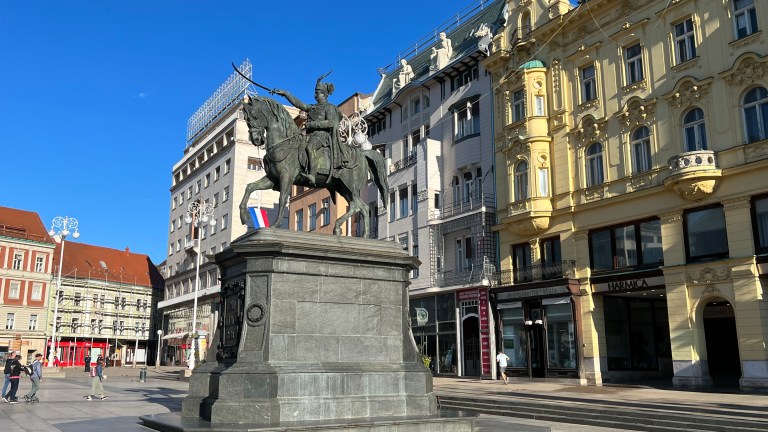
Medieval Towns Merged Into Zagreb
From her stack of plastic-protected 8×10 photos, Nive pulled out a tourist map that she had marked with a pink highlighter to show where the two hilltop medieval towns of Kaptol and Gradec would be located today.
Kaptol dates back to at least 1094, when it became the seat of a bishop, and Gradec was built next to it on higher ground in the 1200s. They merged and formed Zagreb in 1850. We were standing on the lower edge of Kaptol, the Bishopric in the modern section known as Lower Town.
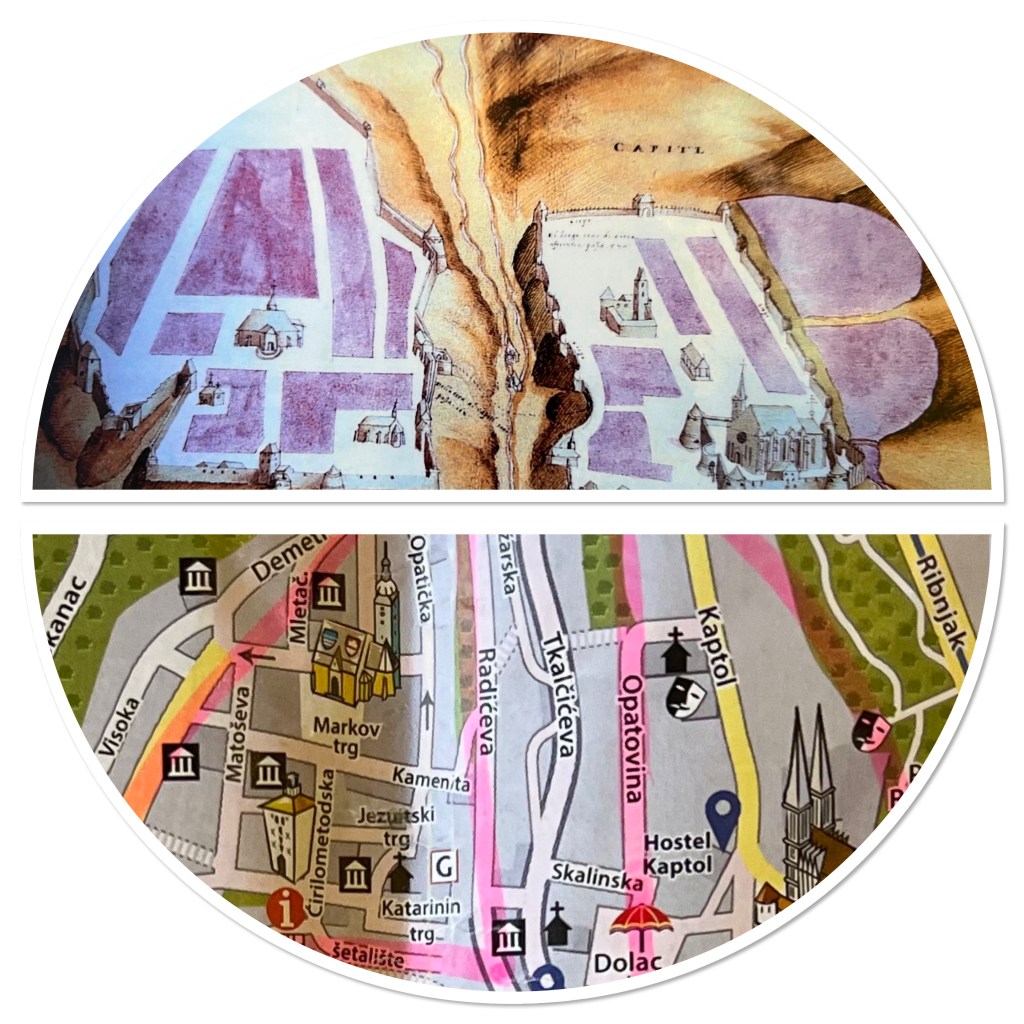
Cathedral: Mongols, Fires and Earthquakes
On the other side of the building we were sheltering under, the Gothic Zagreb Cathedral stood tall but cordoned off for construction.
A 5.4 magnitude earthquake struck Zagreb on March 22, 2020, and damaged one of the two spires. More than two years later, it is still closed for reconstruction.
This Roman Catholic church has been rebuilt many times. It bears little resemblance to the Neo-Romanesque cathedral the Bishropic built in the 11th century.
The structure has withstood several earthquakes and at least three fires, one of which was caused by a Mongol invasion in 1242. The church was rebuilt in the Gothic style. It was fortified after the Mongol attack, and later against the possibility of an Ottoman attack in the 15th century. It weathered two fires in the 1600s, and during the 1880 earthquake the main nave collapsed and a spire was damaged.
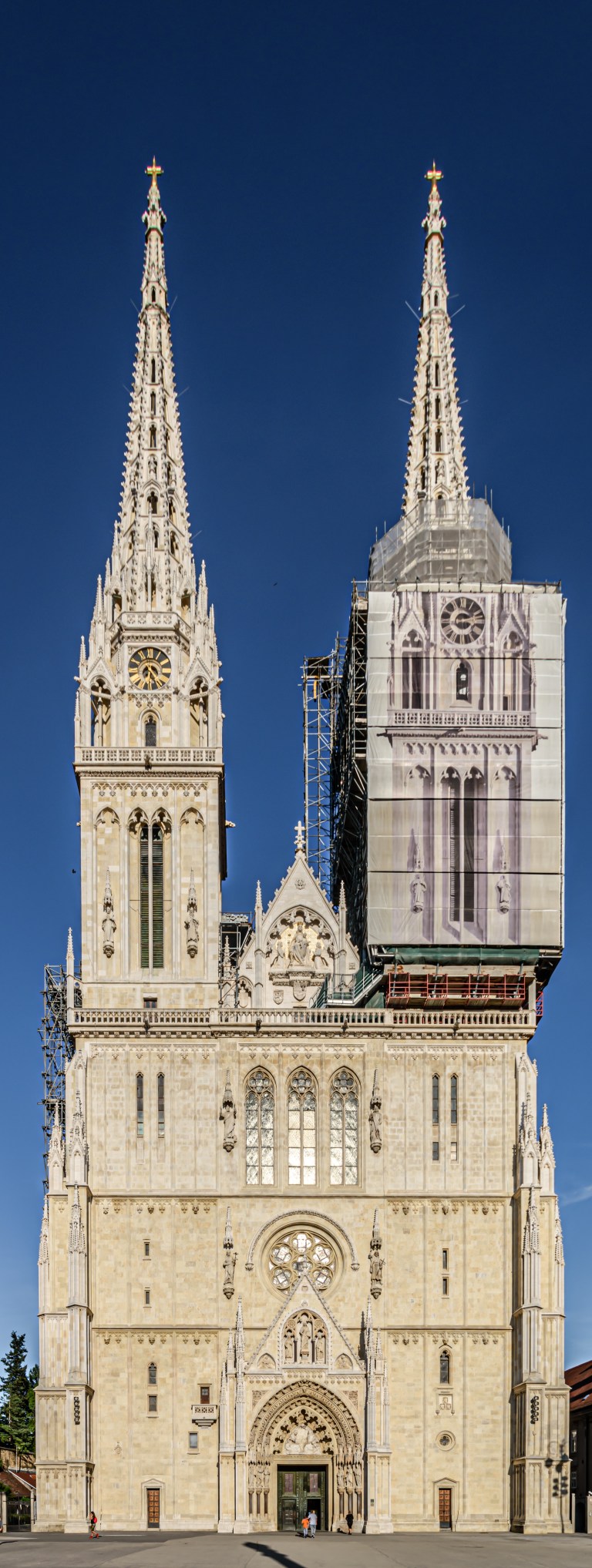
A Time Warp
As all of this sunk in, we followed our enthusiastic guide through the old-world Upper Town (Gornji Grad) hidden behind the row of more modern buildings framing Jelačić Square. It was as if we had stepped through a time warp.
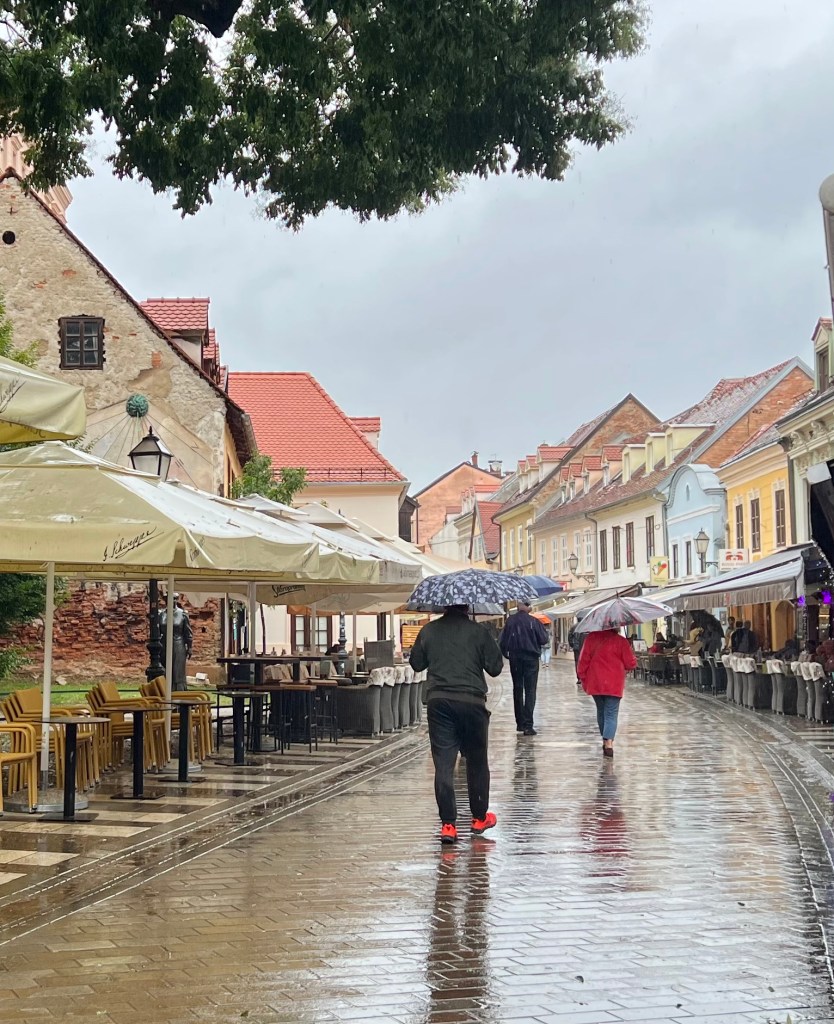
Clutching our umbrellas, we walked the length of the pedestrian Tkalčićeva Street, one of the oldest and busiest streets.
Hard to believe a river ran through it until it was diverted in 1898. And hard to believe it was once an industrial area (paper, soap, and a tannery) and Red Light District from the early 1900s until WWII.
Even with the rain, people were strolling down the street at 4:30 pm, yet no one was sitting in the canopied outdoor cafes.
We would return that night and have dinner at Bistro Agava, a popular restaurant blending Eastern European and Italian dishes.
There are 32 steps leading up to the restaurant’s front door above the street, but the climb is worth it. The service was excellent, the food delicious, and paired nicely with a bottle of Ščurek Stara Brajda Old Vineyard Red from Slovenia.
Our city guide recommended Bistro Agava. But Gourmands can read about Zagreb’s top restaurants in a new English translation of Gault & Millau restaurant reviews. (If you follow this link, click the dropdown menu on their web page to translate the content to English ).
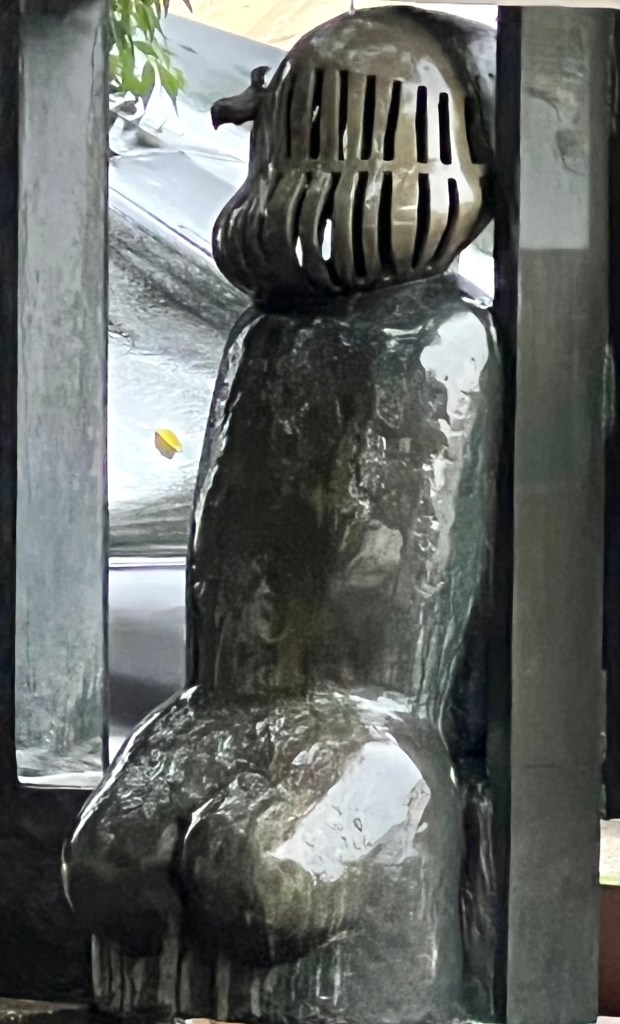
St. George and Stone Gate
We walked toward Stone Gate and stopped to admire a rain-slick black statue of St. George seated on a draft horse. A slain dragon is carved from the rough stone pedestal.
There’s another statue of St. George in Zagreb’s Republic of Croatia Square. We would see St. George’s depiction on a chapel mural a few days later at Ljubljana Castle in Slovenia.
I had always considered him England’s patron saint but realized that his legend spread far and wide.
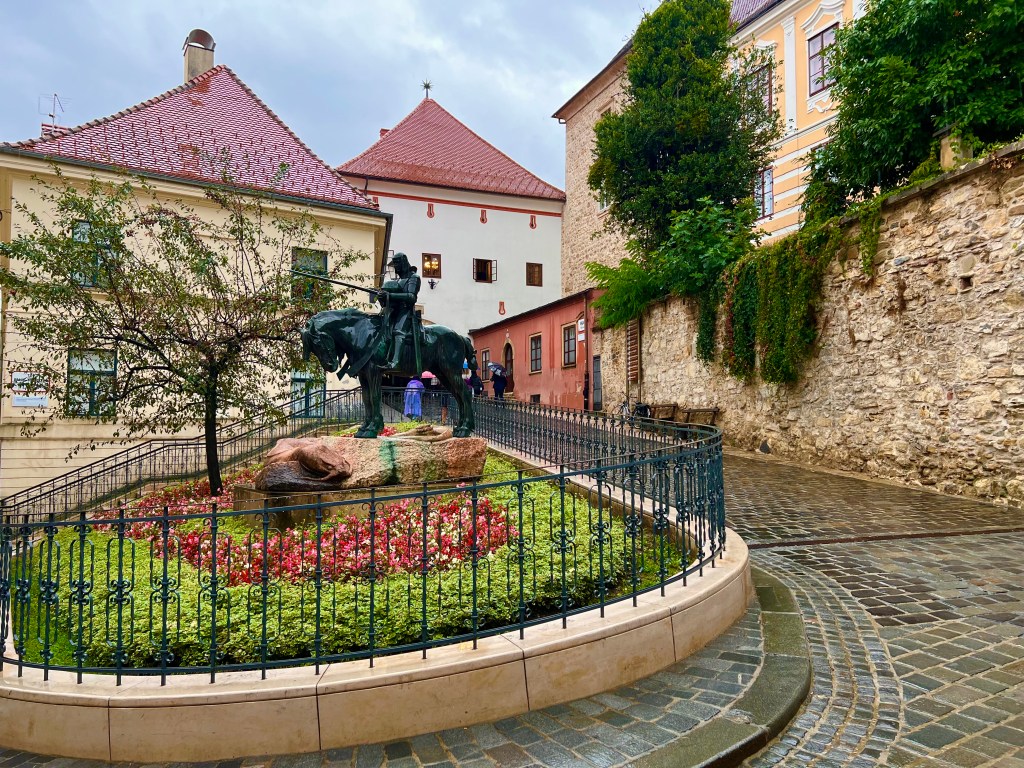
Each country has its legend about old St. George. Still, the one that caught my attention is how he became a Christian martyr after the pagan Roman Emperor Diocletian executed him in Palestine after many gruesome attempts.
Diocletian was born and lived in Split, Croatia, in the early 4th century. In the coming week, we would visit what remains of his palace in Split and the nearby ruins of an arena where he forced Christians to fight to their deaths.
We walked through Stone Gate, the only remaining gate to Upper Town. It was built in the mid-1200s. Inside a tunnel-like enclosure hangs the shrine of Zagreb’s Patron Saint, Our Lady of the Stone Gate. An ornate iron fence protects a painting of the Virgin and Child that hangs above an altar.
The painting, according to legend, was found after a fire that burned Kaptol and Gradec in 1731. The frame burned, but the painting was unscathed. The pious light candles and pray for good fortune.
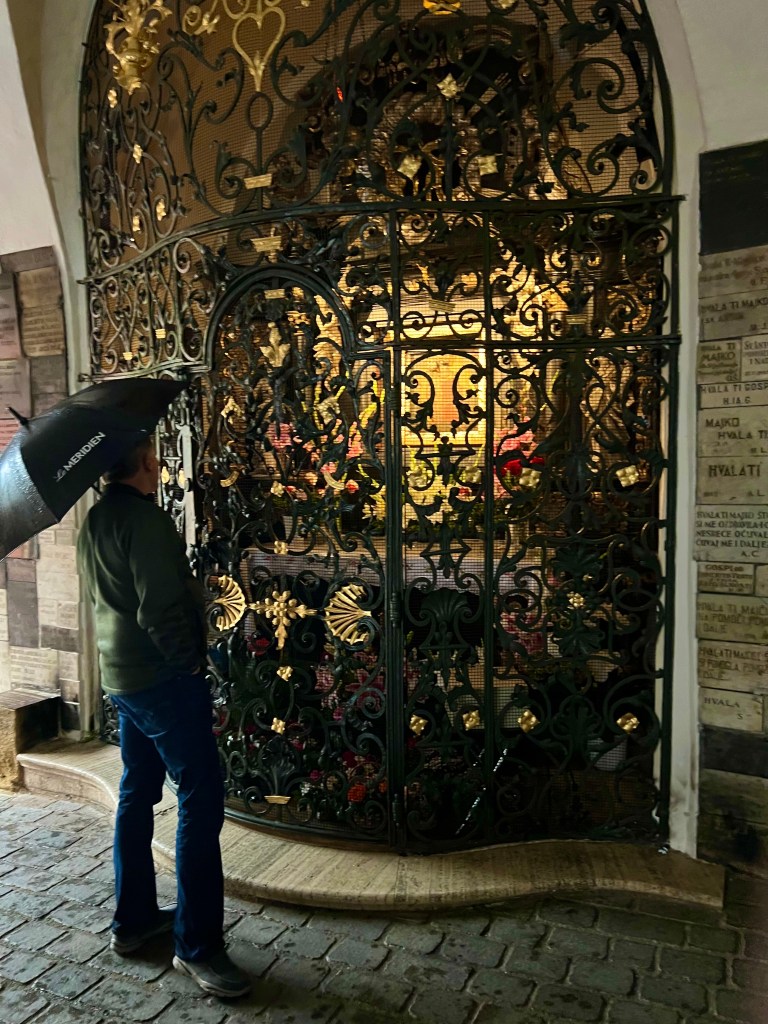
St. Mark's Church and Gas Lanterns
We passed the 13th-century Romanesque St. Mark’s Church.
Its red-checkered mosaic roof (added in 1880) depicts the medieval coat of arms of Croatia (checkerboard), Dalmatia (lions), and Slavonia (marten or “kuna”) on the left side, and the emblem of Zagreb (white castle on red background) on the right.
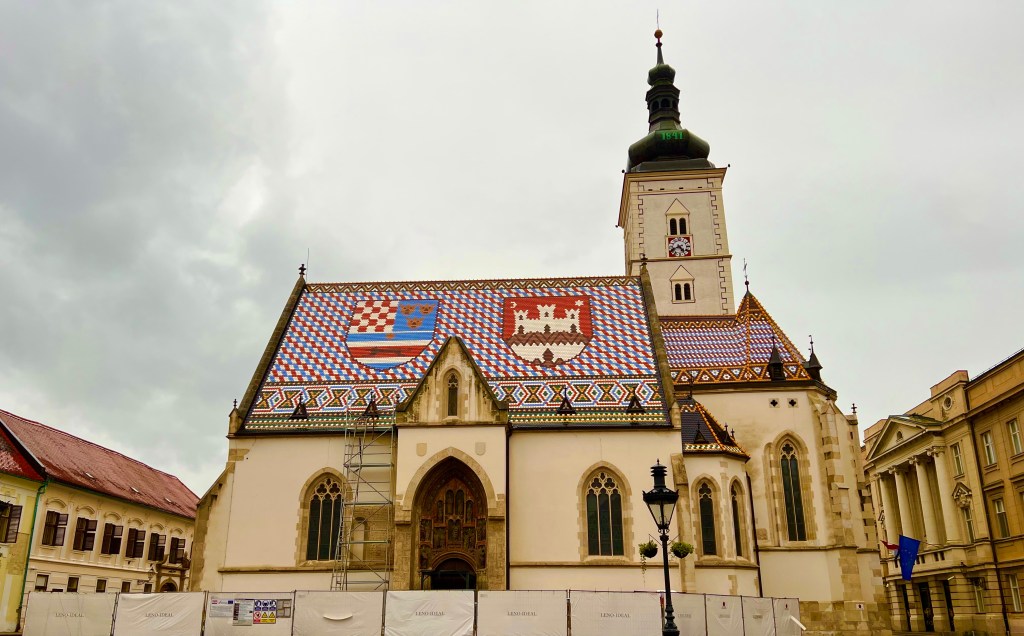
We stopped under one of the many gas mantle lamps located in the Upper Town. First introduced in 1863, there are now 240-plus gas lamps. When they were first installed there were protests from locals worried they emitted poisonous gases.
If your timing is right you might catch a “Nažigači” turning the gas lanterns on at dusk or off at dawn with a long white hooked pole. There are only a few of them, and their rounds take several hours. On special occasions, they wear traditional gray uniforms, but whether they are dressed in casual clothes or uniform, all the reviews I’ve read say it’s a treat to see them. Who knows they might even give you the pole so you can try your hand.
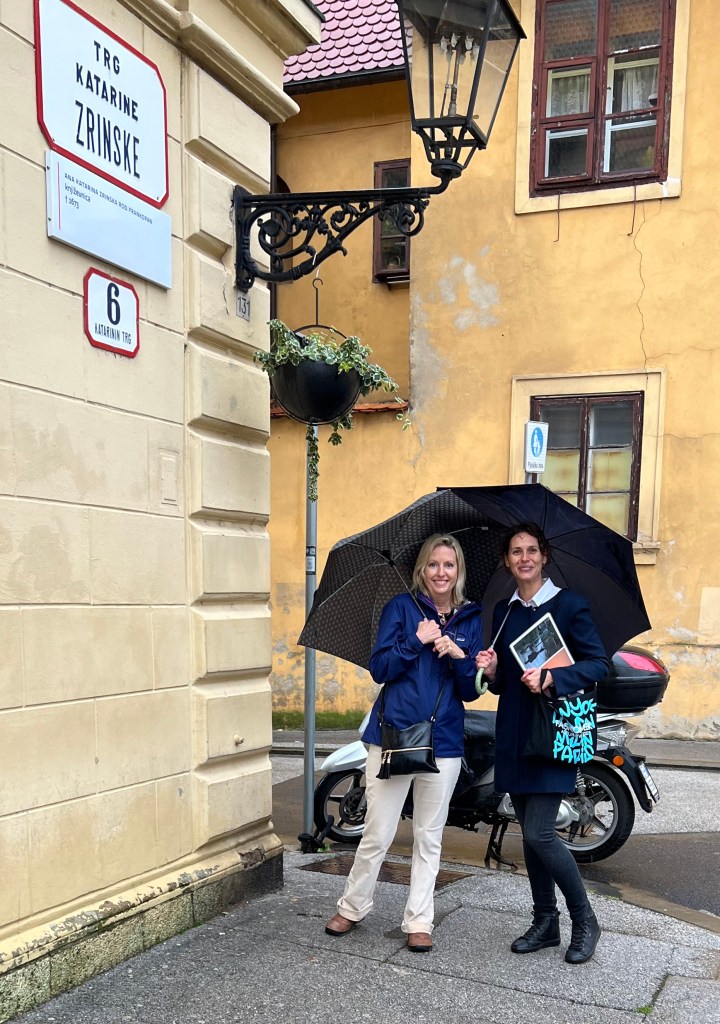
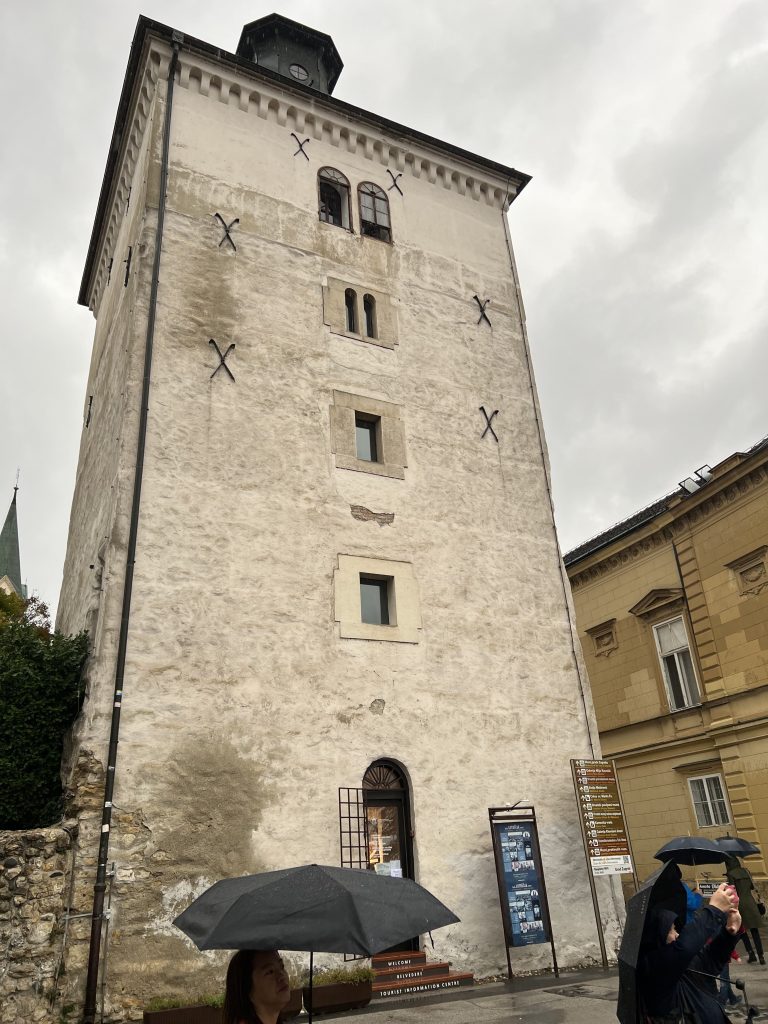
Burglar's Tower
We rounded the corner, and there was Burglar’s Tower or Kula Lotršćak, its name in Croatian. It was built in the 13th century to fortify Gradec after the devastating Mongol invasion. It wasn’t until 1877 that the fourth floor was built. A cannon was placed in one of the two top windows, and at mid-day, it fires cardboard with a loud, convincing blast.
Across from the tower we boarded the world’s shortest and oldest funicular (built in the 1890s). Within a minute we were down to Lower Town where we said goodbye to Nive.
We returned to our hotel, and we were elated to find that our two lost suitcases were waiting for us at the front desk. It was the nick of time because the next morning we were heading across the border to Slovenia.
This post is the 2nd of my 19-part Balkan series that began with Road Tripping on the Balkan Peninsula in September 2022. There, you will find our itinerary to help you plan your trip.
- Ratings are based on 1) Natural Beauty 2) Unique Activities 3) Old World Charm

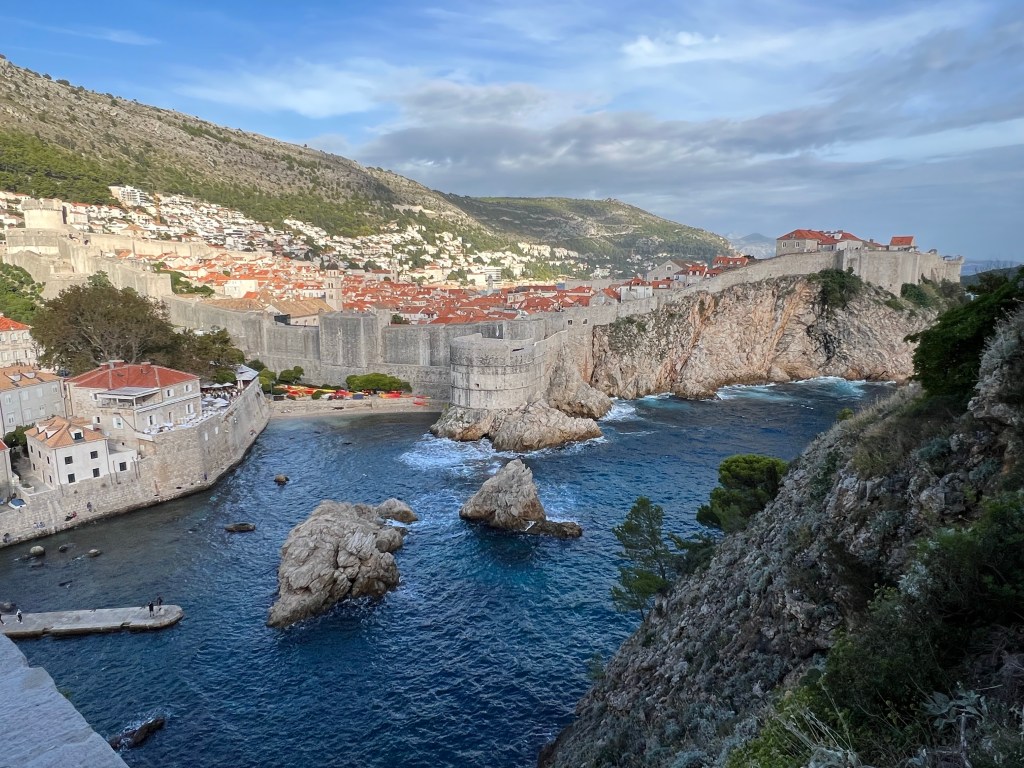
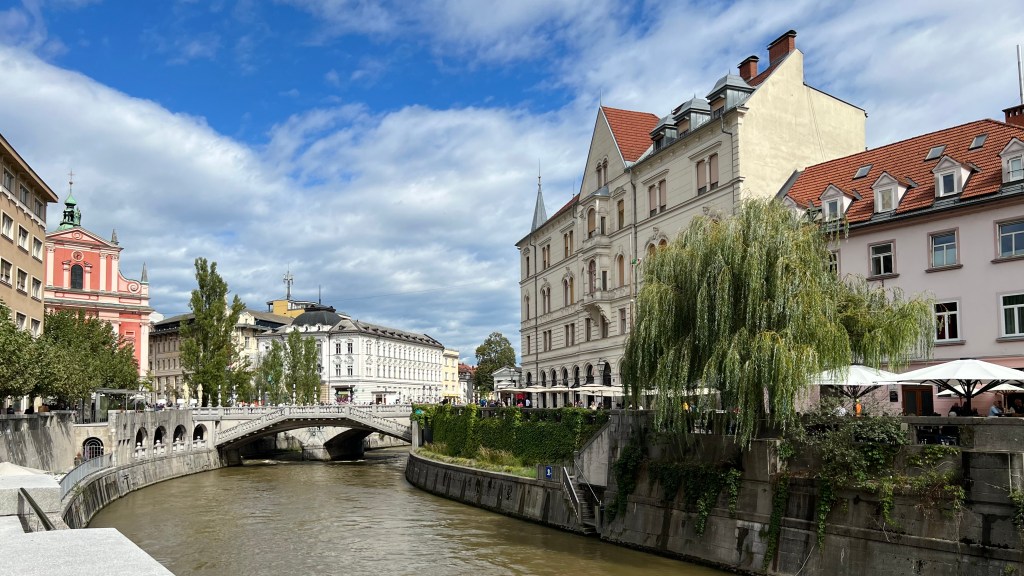










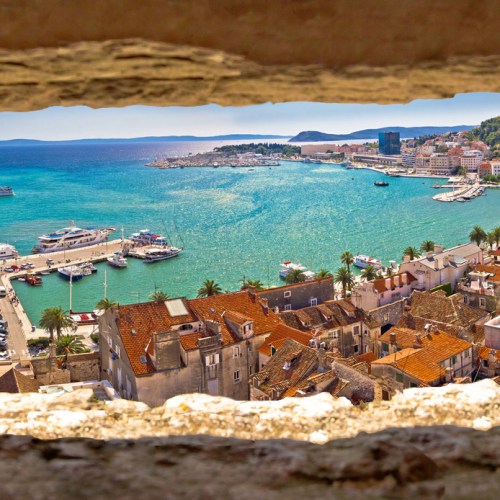
No comment yet, add your voice below!
Discover more from Travel The Four Corners
Subscribe now to keep reading and get access to the full archive.
Continue reading